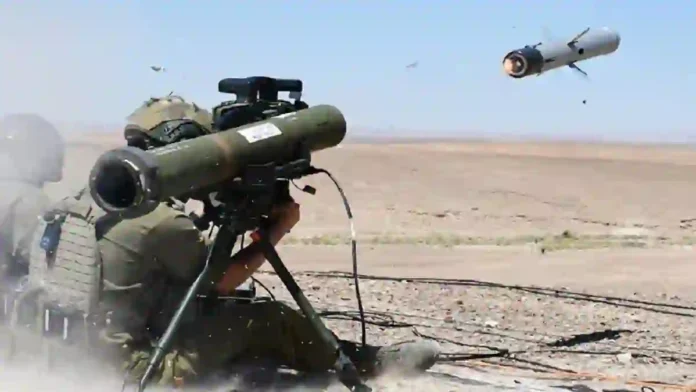Sources – Indiandefensenews
As the military standoff between India and China in the Eastern Ladakh sector enters its fourth year, the Indian Army is actively enhancing its capabilities and deploying newer weapon systems to effectively tackle emergency situations and carry out conventional operations. The Indian Army is planning to introduce the Made in India K-9 Vajra self-propelled artillery guns in the Eastern Ladakh sector, building on their successful deployment in recent years. More than 100 of these guns, supplied by the L&T group from its Hazara plant, are expected to further strengthen the Army’s firepower.
Additionally, the Army has equipped its troops in the region with Spike anti-tank guided missiles to effectively counter enemy tanks and armoured fighting vehicles. It is anticipated that more third-generation missiles manufactured under the ‘Make in India’ initiative will be procured in the near future, augmenting the Army’s capabilities. In recent times, the Indian Army has successfully inducted the indigenous Dhanush howitzer, a technologically advanced version developed based on the Transfer of Technology for the Bofors howitzer. Capable of striking targets up to 48 kilometres away, the Dhanush howitzer has been deployed in the Eastern Ladakh sector since last year. Additionally, 114 guns developed and produced by the former Ordnance Factory Board are set to join the Indian Army, further bolstering its artillery capabilities.
Read More – ISRO EYES MISSIONS TO SUN, MARS, VENUS NEXT
Read More – RudraM-2 successful tested, says DRDO Chief
Focus On Enhanced Mobility
To address the need for swift movement of troops in the rugged terrain of Ladakh, the Indian Army has introduced the M4 Quick Reaction Force Vehicle. This indigenous platform enables the rapid deployment of 10 combat-ready armed troops to forward locations along the Line of Actual Control (LAC) at speeds of around 60-80 kilometres per hour. The induction of these vehicles was prompted by the adversary’s use of fast-moving vehicles during initial face-offs in the military standoff.
The Army plans to increase the number of M4 vehicles in the Eastern Ladakh sector to enhance mobility. All-Terrain Vehicles (ATVs) have also been inducted in significant numbers to support operations in post-2020 standoff scenarios. These vehicles, capable of carrying four to six troops, have proven their efficacy in carrying loads and equipment to sustain troops at forward posts. Additionally, ATVs play a crucial role in swiftly deploying troops and their equipment to tackle emergency situations.
Strengthened Surveillance
To strengthen its surveillance capabilities, the Indian Army has inducted the TATA Rajak system, which provides advanced observation and detection capabilities. This system can detect humans from over 15 kilometres away and vehicles from over 25 kilometres away. With the help of this new equipment, the Army can effectively monitor adversary movements along the LAC. By continuously enhancing its weaponry, surveillance systems, and mobility infrastructure in the Eastern Ladakh sector, the Indian Army remains prepared to effectively respond to any contingencies and ensure the security and integrity of the region.




